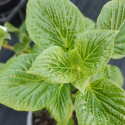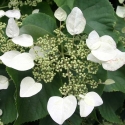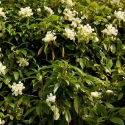Hydrangea Climbers



READ MORE
READ LESS
PAGE 1 ALL aka Climbing Hydrangea Lacecap. This is a very rare, self-clinging, climbing Hydrangea that hails from Mexico. The evergreen leaves are large, serrated and dark green. The flat white flower heads open from large buds and appear en masse in summer. Protect from harsh frost. Evergreen. Hydrangea Seemanii Current Stock Height: 30/40 cm ? Container: 2.5l ? $49.99 aka Japanese Clg Hydrangea A special climber from the Hydrangea family with broad oval leaves and small creamy flower heads in summer. These flowers are surrounded by drooping creamy-yellow bracts. Quite showy especially against a brick wall or similar where it will cling unsupported. Happiest in the sun, hardy and deciduous. Schizophragma Hydrangoides Expected Stock Height: 80/90 cm ? Currently sold out. Add to your waitlist to be advised when next in stock. aka Climbing Hydrangea A self-clinging climber from the Hydrangea family with broad oval leaves and pure white, flat-topped flower heads in summer. Very showy especially against a brick wall or similar where it will cling unsupported. Happiest in the a sheltered position that has full sun or partial shade. Hardy and deciduous. Schizophragma Integrifolium Expected Stock Height: 20/35 cm ? Currently sold out. Add to your waitlist to be advised when next in stock.
An interesting plant that can be used to cover an unsightly wall or fence, perhaps use it to cover a water tank if you live rural. Like me the plant may droop a little in our harsh afternoon sun but as long as it is well watered it will recover as the day cools. Perhaps happiest in a morning sun only position.
Information Pages
Habit: Climbing
Leaves: Evergreen, Green
Mature Size (HxW): Climbing
While Schizophragma (Ski-zo-frag-ma) prefers a sunny spot it can take some shade. The name means Schizo (to divide) and phragma (a wall).
Habit: Climbing
Leaves: Deciduous, Green
Mature Size (HxW): 6m
Habit: Climbing
Leaves: Deciduous, Green
Mature Size (HxW): 10m x 3m
HL Nurseries Limited t/a Wairere Nursery
826 Gordonton Road, R D 1, Hamilton 3281 Ph: (07) 824 3430 Email: